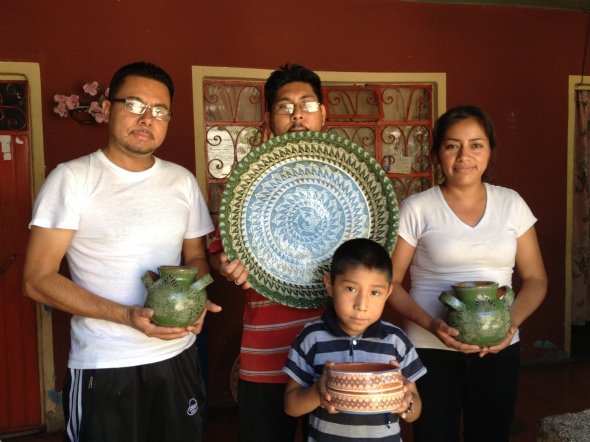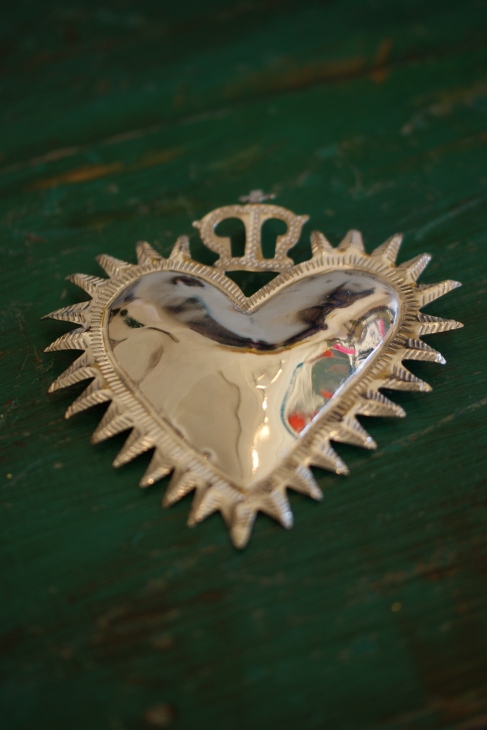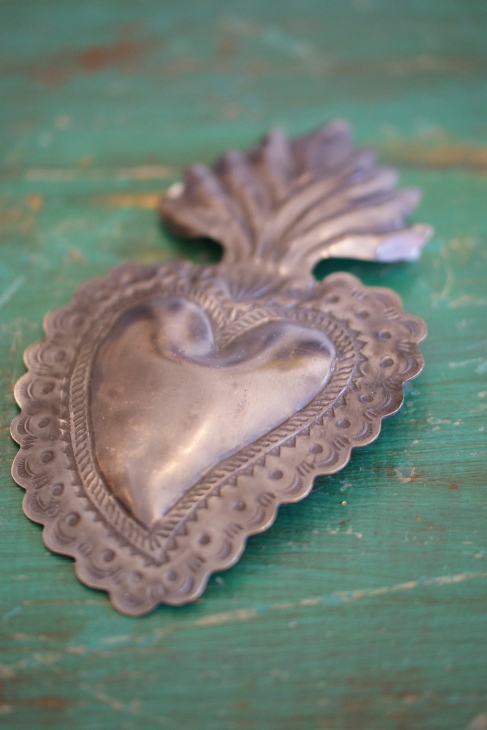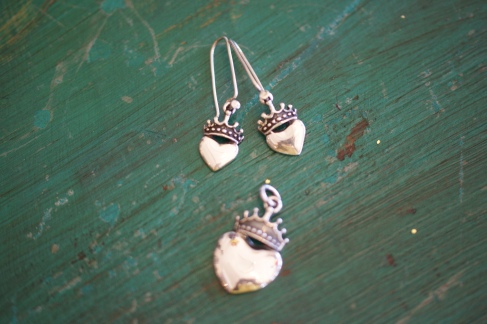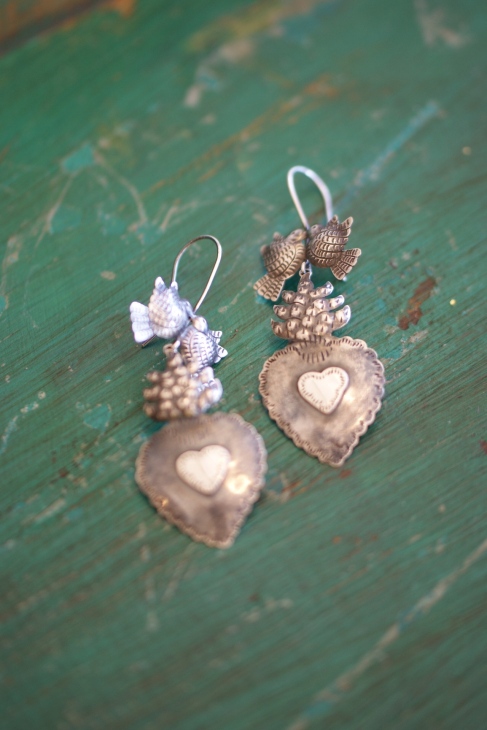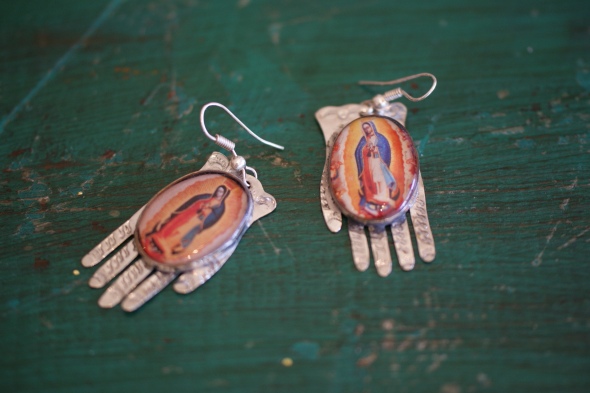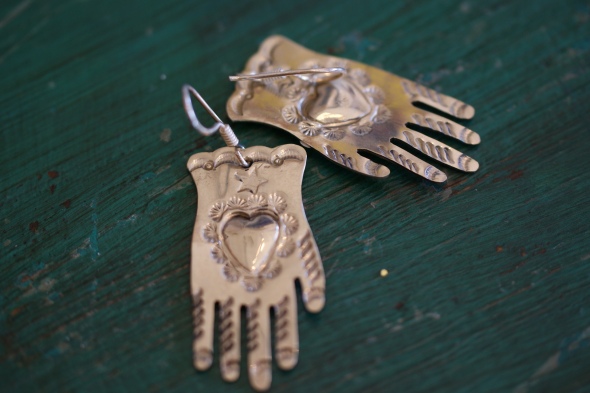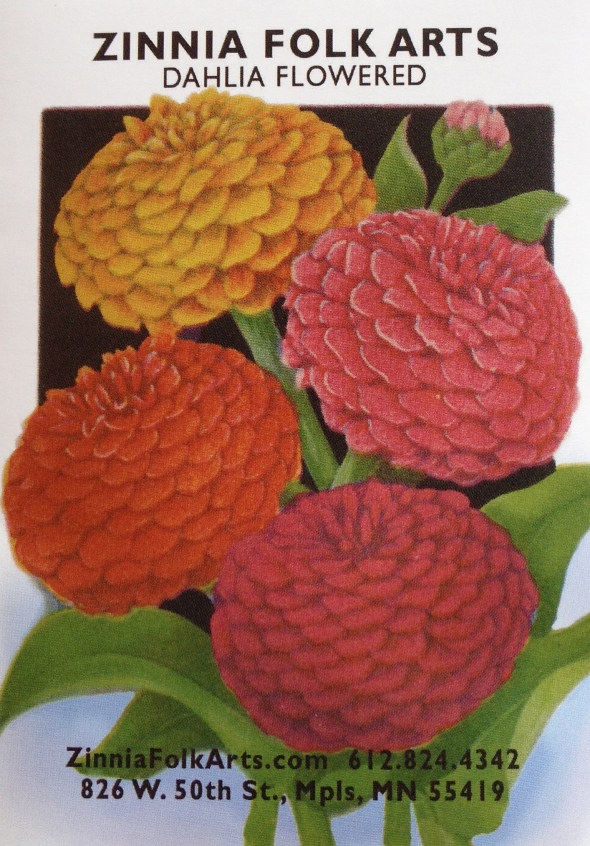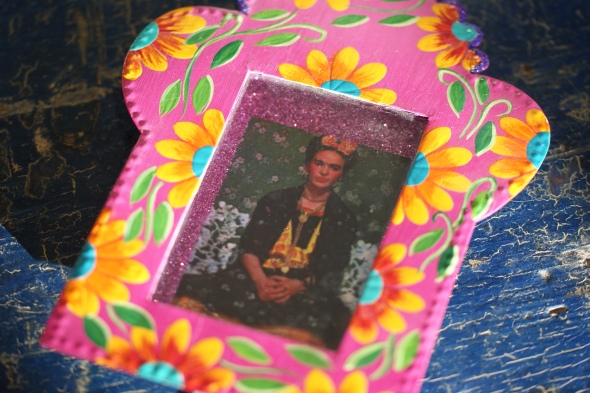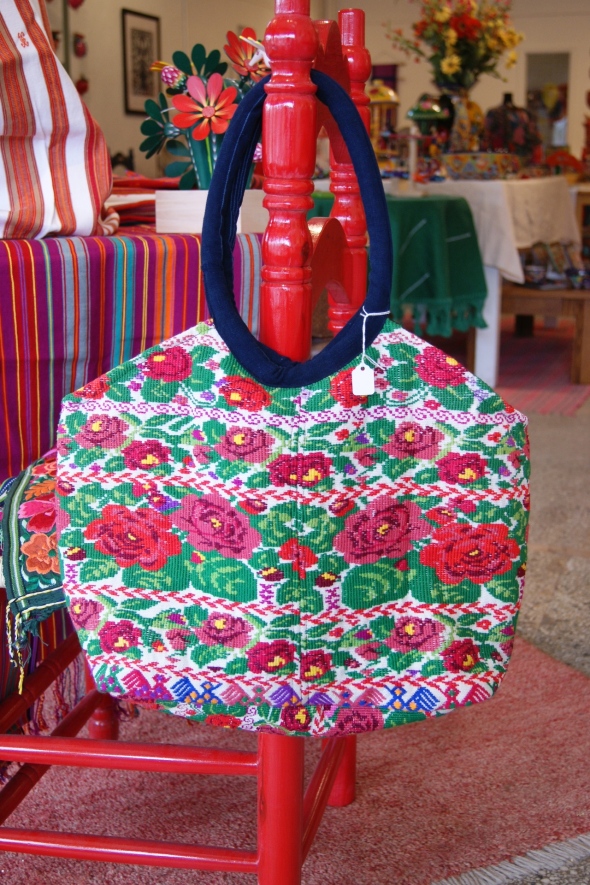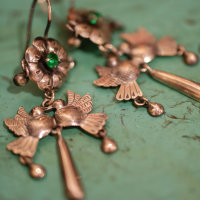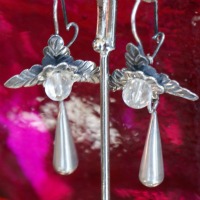Capelo Mexican Handmade Ceramics
Posted: February 12, 2014 Filed under: Clay Ceramics, Mexican Pottery | Tags: Ceramics, handmade, Mexican ceramics, Mexican dishes, mexican style Comments Off on Capelo Mexican Handmade CeramicsIf you like Mexican ceramics, you may be familiar with the majolica of “Capelo” from Guanajuato, Mexico. The pieces are made in the traditional way, on a wheel, fired several times at a very high temperature and in Capelo’s case, glazed with the most beautiful, subtle colors. We currently have a number of Capelo vases in the shop. Here are a few shots…





If you’re interested in any of these or would like to see more photos and get prices, contact us via the form below! Gracias…
Zinnia Folk Arts on Tumblr
Posted: November 17, 2013 Filed under: Mexican Folk Art | Tags: Folk Art, Mexican ceramics, Mexican crafts, Mexican folk art, mexican style, mexico Comments Off on Zinnia Folk Arts on TumblrHave you followed Zinnia Folk Arts on Tumblr? We actively post photographs of folk art and the great country of Mexico there almost every day…so if like the visual side of this blog or enjoy the color and vitality of Mexico, please follow us there! It’s much faster for me to post there too, now that the brick and mortar shop is getting busy for the holidays. Take a look!
Hunting for Quality Folk Art in Mexico
Posted: August 22, 2013 Filed under: Clay Ceramics, Folk Art, Mexican Folk Art, Mexican Pottery, Zinnia Folk Arts Shop | Tags: Ceramics, handmade, Mexican ceramics, Mexican crafts, Mexican folk art, mexican style Comments Off on Hunting for Quality Folk Art in MexicoYou may know that I recently returned (last Monday) from a 12 day trip to Mexico. Everyone asks me if I had fun on the trip and I always have to pause just a moment before I say, “Yes, it was fun.” Because it is fun but it is also exhausting, exciting, difficult, frustrating, not relaxing, amazing, delicious, sometimes confusing and did I mention, exhausting? So many people associate Mexico with vacation, that I think it’s hard for people to imagine that I’m not sitting on the beach with a salty Margarita with Fernando!
I travel to Mexico several times a year to purchase folk art for the shop and I try to go somewhere new every time I go and I try to find new artisans every time I go. It’s the new adventures that are the most exhausting. The artisans I’ve visited before, I now know where to find, I’ve figured out the logistics of how to get there, how to pack everything, how to schlep it to the shipper, how to get everything back safely without too much breakage or loss.
But, the new artisans are sometimes much more difficult to find, requiring stopping in corner grocery stores and asking addresses, stopping people on the street and asking if they know so-and-so, driving down narrow cobblestone streets, driving down one-lane streets then having to back out, asking people again where the person lives and then getting answers like, “Oh, he lives in the house with the wood door.” Many of the addresses are something like, Mr. ABC, Calle XYZ, Sin Numero or XYZ Street, Without a Number. It’s not easy, amigos!
But also how rewarding! Many of the artisans I have visited are in very out-of-the-way houses in very out-of-the-way pueblos. The pleasure they have when I arrive (and the amazing warmth and generosity) and the pride of workmanship and of course, the excitement of being able to sell something lovely, more than compensates for the difficulty. And then of course the pleasure that these fine works of folk art give to my customers in the US, is also a great pleasure.
This is a little family that I found after asking 8 people in two towns and 5 different streets. It took an afternoon but as you can see, TOTALLY worth it.
How about you? Have you had any adventures searching for artisans in Mexico?
Sacred Hearts In Mexican Folk Art
Posted: July 25, 2013 Filed under: Folk Art, Mexican Crafts, Mexican Folk Art, Mexican silver jewelry, Milagros, Religious Folk Art, Zinnia Folk Arts Shop | Tags: Gifts, Mexican crafts, Mexican folk art, Mexican jewelry, Mexican silver, mexican style, Religious folk art, silver earrings Comments Off on Sacred Hearts In Mexican Folk ArtThe Sacred Heart is one of the most common motifs in religious folk art created in Mexico. The idea is that the physical heart of Jesus is a symbol of his divine love for humanity. The Mexican folk art sacred heart comes in various forms–with flames around it, with a crown, with a dagger through the center and sometimes with a crown of thorns–and all represent the same thing, Jesus’ compassion for humanity. In some Christian paintings it is depicted as a flaming heart shining with divine light, pierced by the lance-wound, encircled by the crown of thorns, topped by a cross and bleeding. The bleeding and wounds and crown of thorns allude to the manner of Jesus’ death while the fire stands for the transformative power of God’s love.
And of course, you know that almost everyone in Mexico is Catholic so these images are commonly seen throughout the country…
Here are a few interpretations of the sacred heart by some of Mexico’s folk artists. The two hearts above, hang on the wall. One is shiny nickel silver (5″ tall) and other is a patina-ed nickel silver or alpaca (7″ tall). They are $38 for the shiny one and $28 for the darker one.
The two sets of earrings below are made of silver and come from Taxco, Mexico. The lovely crowned earrings are $38 and the pendant, $30. The stunning, oxidized earrings with lovebirds and a flaming heart are $78. Click on the photo of the earring to take you to the online store.
Contact us through the form below if you are interested in purchasing the sacred hearts above or anything else!
To see what else we have for sale in the online shop, click here.
Flowers, flowers everywhere…
Posted: May 21, 2013 Filed under: Folk Art, Mexican Crafts, Mexican Folk Art, Paper Folk Art | Tags: handmade, Mexican folk art, mexican style, paper folk art, tissue paper flowers Comments Off on Flowers, flowers everywhere…“So, why did you name the store, Zinnia Folk Arts?”
Did you know that zinnias are a flower native to Mexico? Zinnias come in lots of different colors and shapes and sizes just like Mexican folk art. I love the image of the zinnia and the possibilities for design and branding. They are annuals in Minnesota (maybe they are everywhere?) and we celebrated our first anniversary by handing out packs of zinnia seeds. We also are sending them to people who purchase something from the online shop through the month of May to celebrate our one year at 50th and Bryant in Minneapolis!
Flowers all types are pretty ubiquitous in Mexico…calla lilies, roses, poinsettas, marigolds…check out the flower markets in Mexico City if you are there. They are stunning! In addition to finding flowers in the fields, markets and homes of Mexico you will find flower images almost everywhere else. Flowers are a common motif in jewelry, in the many painted functional and whimsical objects of clay and wood and really, just about everywhere! And is it me, or do they all look like zinnias?
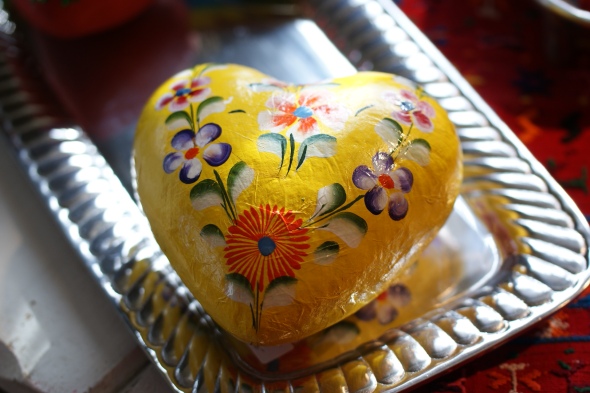
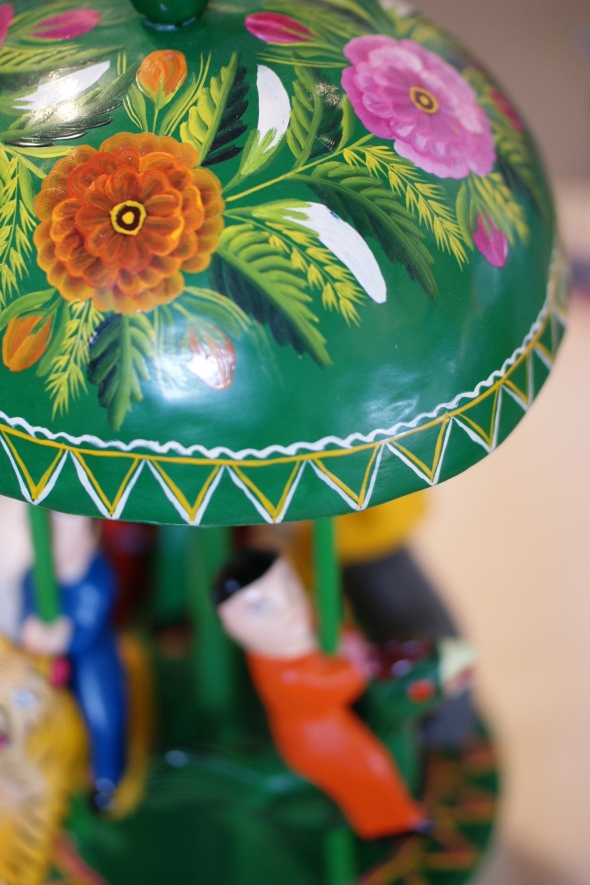
Ok, I guess these could be called roses. This bag was woven first, then made into a bag and it is really beautiful…
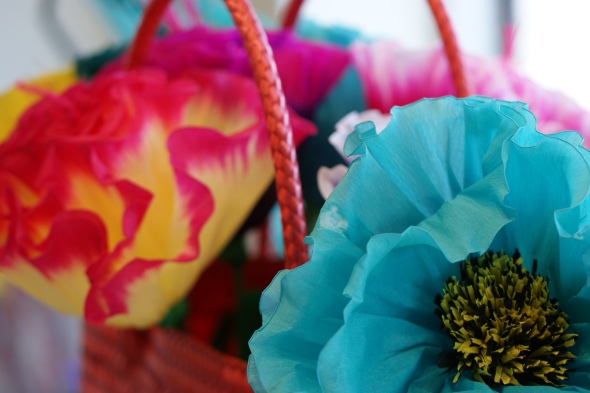
Folk artists also make them from paper. Tissue paper flowers are having a moment–take a look at Pinterest or any wedding blog. If you’re in the Twin Cities, stay tuned for the class we’ll be having at the shop on June 22–we’ll be teaching you how to make beautiful, tissue paper flowers. It will be part of the 50th and Bryant Street Fest from 12-3 that day…more details later!
Silver Mexican Earrings Made by the Mazahua
Posted: March 6, 2013 Filed under: .925 SIlver, Jewelry, Mexican Folk Art, Mexican Jewelry, Mexican silver jewelry, Silver jewelry from Mexico | Tags: Mazahua, Mexican folk art, Mexican jewelry, Mexican silver, mexican style, silver earrings Comments Off on Silver Mexican Earrings Made by the MazahuaThere are some amazing silver artisans in the Mazahua area of Mexico, northwest of Mexico City. They have been making earrings for a very long time. They were deeply influenced by the Spanish conquest of Mexico in the 1500’s. When Spanish women arrived in Mexico they brought many new jewelry styles but in particular a style of earring that was crescent-shaped (arracada) and often wrapped in silver or gold. These styles took root in Mexican silver jewelry making and continue to this day.
One Mazahua silversmith told the author of an article on Mazahua earrings in Artes de Mexico, the meaning of the silver earrings. He said, “The stones symbolize the bright star that comes out at around four or five in the morning. The doves represent the husband going out into the fields to work, and his wife getting up to make atole. The flowers and leaves refer to the countryside, to nature. And the lines are the rays of the Sun.”
When the artisans learn to make these intricate earrings, they practice on less expensive metals such as copper and brass. Once they master the technique, they start using silver wire and silver sheets. To this day the elder artisans teach the younger. Unfortunately, not as many young people are so interested in carrying on the tradition. Like so many types of folk art, the Mazahua earring is at risk of dying out.
All of these earrings are .925 or 92.5% silver. Click on the photograph and you will be taken to the website. If you get a message saying, “This product is no longer available” that means they have been sold. So hurry!
Beaded Huichol Easter Eggs And Bracelets
Posted: March 2, 2013 Filed under: Folk Art, Huichol, Jewelry | Tags: handmade, huichol indians, Mexican crafts, Mexican folk art, Mexican jewelry, mexican style Comments Off on Beaded Huichol Easter Eggs And BraceletsThe Huichol Indians of Nayarit, Mexico are amazingly skilled at beading. Here’s a shot of a few eggs that I have in the shop at the moment. The eggs are carved out of wood, then covered in a thin coat of beeswax, then decorated bead-by-bead. Truly lovely. Not available in the online shop because there are so few but if you’re interested in them, send me a note on the form below. They are $16 for the small and $21 for the large.
And below, is a photo of the amazing beadwork that goes into the bracelets. They move like liquid. Incredibly gorgeous. These are the last two Huichol bracelets I have at the moment and they are available right here.
Brown Mexican Textiles
Posted: February 22, 2013 Filed under: Chiapas, Folk Art, Global Style, Guatemala, Mexican Crafts, Mexican Folk Art, Mexican Style, Mexican Textiles, Textiles | Tags: handmade, Mexican crafts, Mexican folk art, mexican style, Mexican textiles, table runners, Textiles Comments Off on Brown Mexican TextilesWinston Churchill said many things well. And he commented on many things. But who knew he had an opinion about color? The esteemed Mr. Churchill said, “I cannot pretend to feel impartial about colors. I rejoice with the brilliant ones and am genuinely sorry for the poor browns.”
This post is in honor of the poor browns. They tend to take a back seat to their fellow colors, especially in Mexico. These textiles were discovered at the bottom of the pile, underneath the pinks, roses, reds, yellows, bright oranges and greens. They are a quieter bunch. I do think they have a certain beauty. But they don’t always stand out. They are good listeners. They don’t talk unless they have something to say. They shine when they are on their own. They never compete for attention.
Many of these camino de mesas (table runners) or placemats are woven of a natural brown cotton called “coyuche,” a word that comes from the Nahuatl word for coyote. On the other hand, it is possible that it is white thread dyed to look like coyuche, according to research done by an amazing textile archivist by the name of Karen Elwell. Her many photos of Mexican textiles and clothing are always instructional. Her Flickr photostream is right here.
The photos below are the textiles I currently have in the shop. CLICK on the photograph to take you to the shop. Some are in the online store, but if not, just send me an email on the form at the bottom and I’ll let you know if it’s available!
I couldn’t resist with the last photo. Brilliant color with the poor brown.
Going to the Mercado Merced in Mexico City
Posted: February 10, 2013 Filed under: Mexican Crafts, Mexican Folk Art, Mexican Style, Mexico, Virgin of Guadalupe | Tags: Markets of Mexico, mexican style, Virgin of Guadalupe 2 Comments
One of my favorite things to do wherever I am in Mexico is to visit the local market. In Mexico City, there are so many markets to choose from–all of them slightly different and all of them interesting. Yesterday I took the subway to La Merced, one of the largest mercados in the Federal District. It covers an entire block and then spills out into the streets. I took the photo below to show you how empty the subway station was on an early Saturday morning. The Metro is the best thing going in Mexico City. It costs 3 pesos to go anywhere and it’s clean, safe and speedy.

The Metro stops right inside the market so there’s no confusion about where to get off. Just climb up the stairs from the train and boom, you are inside the huge Mercado Merced. I like to wander a bit just looking at the fruits and vegetables, the zapatos, the plastic stuff, but my ultimate destination is always the paper products. There is such a huge variety in so many colors! Valentine’s Day is coming soon, so there’s an abundance of pink and red.

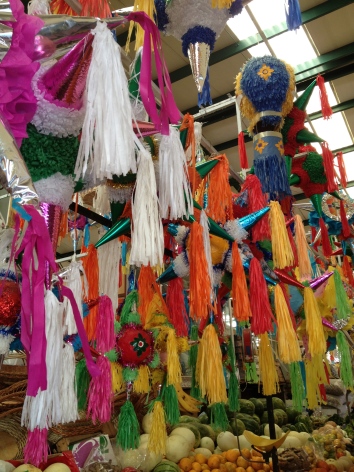
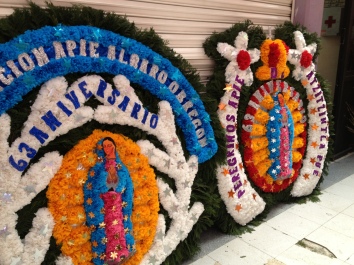
These decorations look like they are decorated with flowers but it’s paper!

